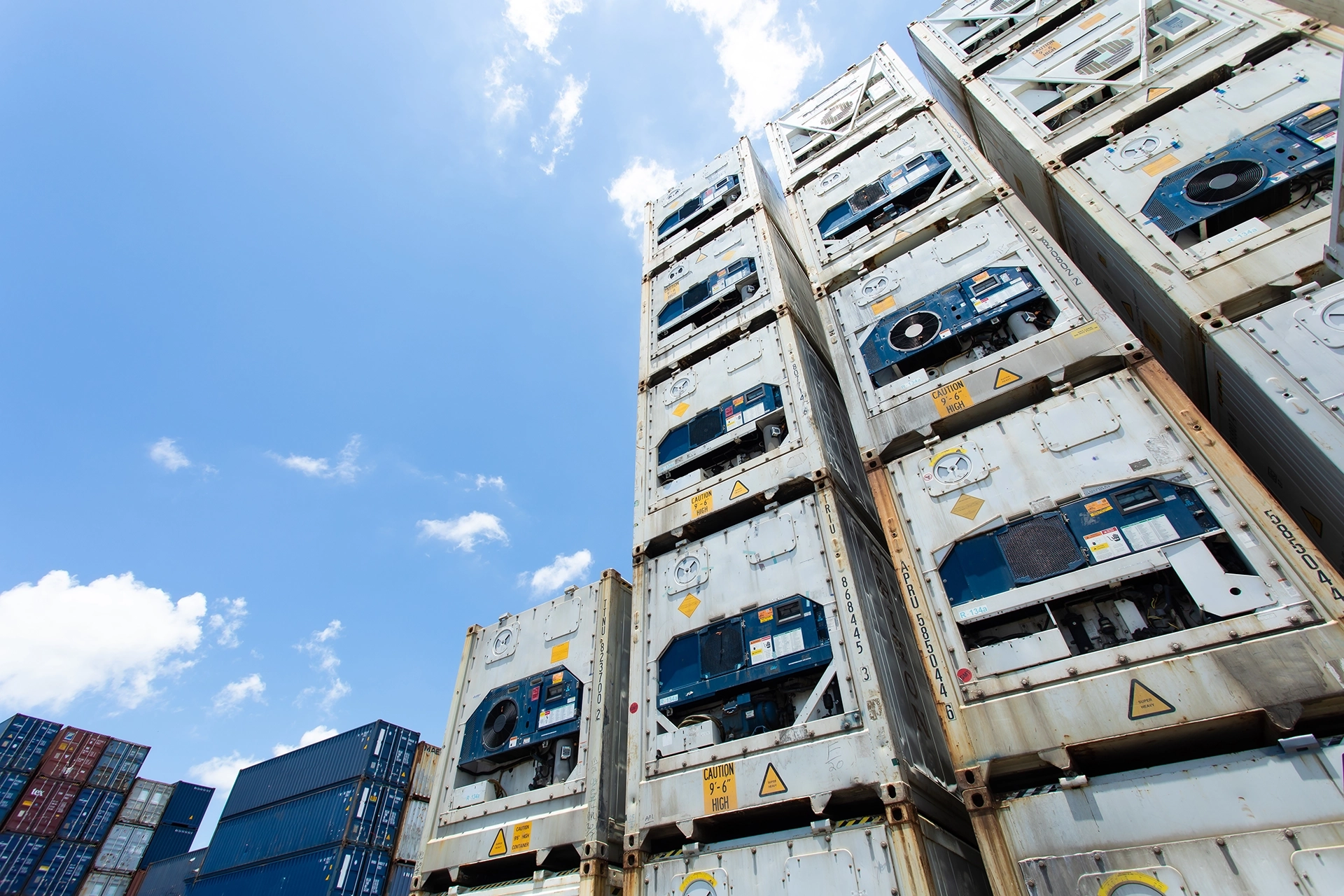
Refrigerated containers
One specialized type of container is a container with a cooling system. Like standard containers, these are metal structures with a cuboid shape, usually available in 10-foot, 20-foot, 40-foot and 45-foot lengths. They are used for storing and transporting goods, but in this case, we are talking about products that require special conditions, the properties of which may even depend on the time of transport. Refrigerated containers provide protection of cargo from adverse weather conditions, such as precipitation, and also protect it from internal damage during transport and from spoilage of products, especially those that require maintenance at a certain temperature.
Refrigerated containers make it possible to maintain the desired temperature inside (both negative and positive). They are widely used in the food, retail, catering and medical industries, for example, for transporting meat, vegetables, fruits, dairy products, flowers or laboratory samples. Thanks to their mobility, they can also act as portable cold stores, giving seasonal operations flexibility.
The most important component in a refrigerated container is the cooling system. Depending on the model chosen, chillers such as Carrier, Starcool, Thermoking or Daikin are used. Once connected to the power supply, regardless of atmospheric conditions and climate zone, they begin operation, ensuring that the required temperature is reached and maintained in the range of about -30°C to about +30°C. The cooling systems allow temperature and fan speed control. To power these systems, 380V voltage, 10 kW power and 32A current are required.
Refrigerated containers are devices used in industry, so they must meet strict standards. One of the most important requirements for refrigerated containers is to have PTI (Pre-Trip Inspection) certification. This is a procedure that covers each refrigerated container to verify that it is suitable for loading and that the refrigeration system is working properly. Each chiller also has a sticker indicating the date of the last inspection.
Types of refrigerated containers
When you choose a Reefer refrigerated container, you gain additional storage space that can act as a mobile cold store or provide stable thermal conditions during the transportation of goods. The Reefer refrigerated containers are ready for use immediately after unloading. Simply connect the chiller to a power source to maintain the required temperature between -30°C and +30°C. Depending on your preference, reputable brands such as Carrier, Starcool, Thermoking or Daikin are used to cool the goods.
Available in a variety of sizes, isothermal containers are ideal for the food and florist industries, providing optimal storage conditions for goods. The most popular sizes are 20'RF and 40'HCRF. Thanks to the insulating design, placing goods inside an isothermal container protects them from rapid temperature changes outside. Isothermal containers are sourced from converted container cold stores and may not have working chillers. However, their insulating properties allow them to slow down the reaction of goods to changing external conditions, which contributes to prolonging the shelf life of products. That's why they are particularly useful for sensitive goods that require stable temperatures, especially in changing weather conditions.
Advantages of refrigerated containers:
Buy or rent a container
Questions and answers: